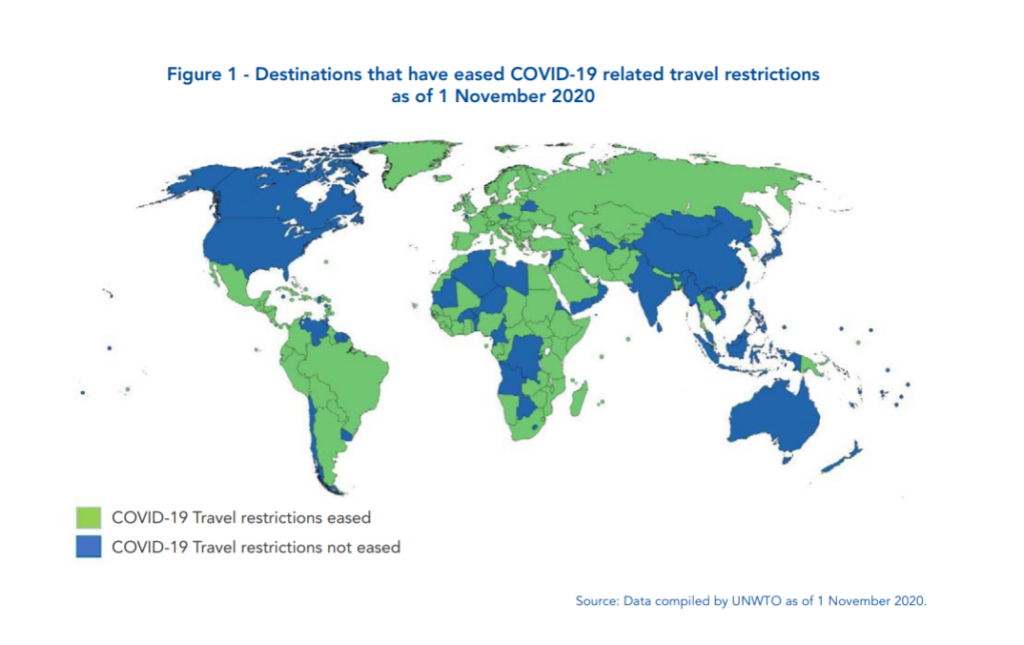
 "
"

 "
"

The number of destinations closed to international tourism has reduced but a global gap has emerged within the industry.
The eighth edition of the UNWTO Travel Restrictions Report reveals that 70% of destinations have lifted travel restrictions introduced in response to the COVID-19 response. However, just one in four destinations continue to keep their borders completely closed to international tourists.
According to the report, 152 destinations have eased COVID-19 related travel restrictions for international tourism. This is an increase of 37 destinations compared to 1st September 2020. In comparison, 59 destinations have kept their borders completely closed for international tourism. This is a decrease of 34 destinations compared to 1st September 2020.
Europe was the region in which more destinations (91%) have eased travel restrictions, mainly because of easing restrictions among the Schengen Member States and despite the fact that they remain partially closed to third- countries. However, due to the recent development of the new strain of virus being considered as too contagious, many countries are slowly closing its borders to the destination.

Ease of travel were also observed in Africa (75%), the Americas (78%) and the Middle East (62%). In these three regions, many destinations have shifted towards requesting negative PCR tests upon arrival. Asia and the Pacific remains the region with less travel restriction lifts (33%). This is of particular interest as destinations in Asia and the Pacific were among the first that introduced travel restrictions at the very beginning of the outbreak of the virus.
UNWTO report shows that health and hygiene infrastructure is an important factor connecting those destinations which have eased restrictions and those where borders remain closed.
Launched by the World Tourism Organization at the start of the pandemic, the Travel Restrictions Report keeps track of measures being taken in 217 destinations worldwide, helping to support the mitigation and recovery efforts of the tourism sector.